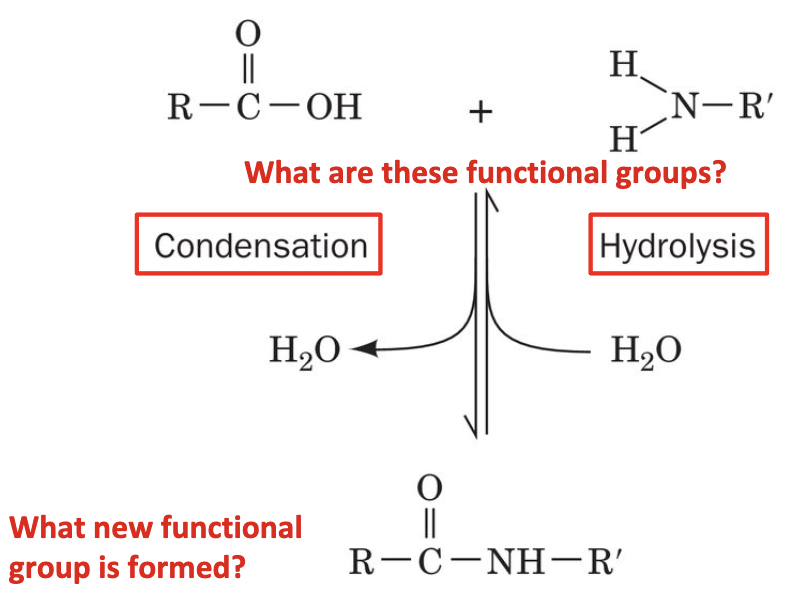ch 1 introduction to chemistry of life
1/13
There's no tags or description
Looks like no tags are added yet.
Name | Mastery | Learn | Test | Matching | Spaced |
|---|
No study sessions yet.
14 Terms
summary of biomolecular properties
biomolecules are constructed hierarchically, from a limited number of elements
certain functional groups (reactive portions) and linkages (bonding arrangements) characterize different types of biomolecules
simple molecules condense to form more complex ones, like polymers
self-replicating molecules make copies are are subjected to natural selection
the properties of biomolecules reflect their fitness to living conditions
covaent bonds
formed by sharing e- pairs, making H, C, N, O appropriate to support life
bond energy
energy required to break a covalent bond
how does DNA relate to covalency
2 polynucleotide chains bind through hydrogen bonds, giving rise to non-covalent, structural complementarity
replication is possible because each member of a pair can recognize the identity and orientation of its partner
intra
within
inter
between
properties of biomolecules that reflect their fitness
macromolecules and their building blocks have a “sense” or directionality
some macromolecules are informational
biomolecules have characteristic 3D architecture
weak forces maintain biological structure and determine interactions
which four elements occur in virtually all biological molecules?
CHON
summarize the major stages of chemical evolution
form biomolecules
assemble biomolecules into organized molecular systems
results in self-replicating collections of molecules
practice drawing a simple condensation and hydrolysis reaction

explain why complementarity would have been necessary for the development of self-replicating molecules
because it allows pairs to recognize the identity and orientation of its partner
summary of cell as unit of life
compartmentalization of cells promotes efficiency by maintaining high local concentrations of reactants
metabolic pathways evolved to synthesize molecules and generate energy
the simplest cells are prokaryotes
eukaryotic cells are characterized by numerous membrane-bounded, including a nucleus
the phylogenetic tree of life includes three domains: bacteria, archaea, and eukarya
evolution occurs as natural selection acts on randomyly occuring variations among individuals
prokaryotic cells vs eukaryotic cells
prokaryotic:
dingle cell
no nucleus or organelles
eukaryotic:
larger than prokaryotes (10³- 10^4 times bigger)
nucleus + many organelles
high local concentration of biomoleucles
bacterial flagellar motor relies on high concentrations of biomolecules to work